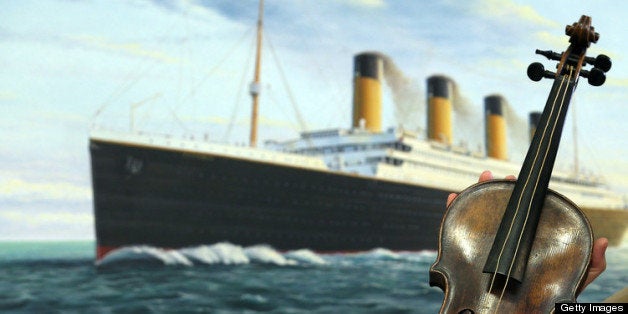
The fascination with the ship RMS Titanic continues more than 100 years after it sank in the cold North Atlantic, taking more than 1,500 people to a watery grave.
According to a new survey conducted by the Marist Institute for Public Opinion and Sea Research Foundation, the parent of Mystic Aquarium, almost two-thirds of Americans (65 percent) believe the site where Titanic lies more than two miles under water should be preserved as an international memorial. In addition, six in 10 agree that artifacts taken from the ship should not be auctioned off for monetary gain.
Unfortunately, that is just what has happened -- and is happening -- as for-profit opportunists seek to gain monetarily from the tragedy.
When my colleague at Sea Research Foundation, famed oceanographer Dr. Robert Ballard, discovered the wreck of the Titanic on September 1, 1985, it lay as it had been on the ocean floor for 73 years -- a monument to the frailty and hubris of man now resting at peace, undisturbed at the bottom of the Atlantic.
But since that time, hundreds of others have visited the site, including salvagers, who removed thousands of artifacts that have been put on public display or auctioned.
In 2004, Sea Research Foundation and Dr. Ballard returned to the Titanic using remotely operated vehicles (ROVs) for the sole purpose of determining how the ship has fared after years of depredation. What we saw was shocking: A memorial plaque honoring the victims that had been placed on the bow of the ship during the 1985 expedition was found torn from the ship and discarded on the ocean floor. Titanic had also had suffered significant structural damage well beyond what can be attributed to natural causes.
The national Marist Poll phone survey of 1,233 Americans shows that Americans are still very moved by the Titanic catastrophe. I know this first-hand as my organization's Mystic Aquarium opened an exhibition called Titanic -- 12,450 Feet Below last year to commemorate the centennial of the tragedy. Since then, hundreds of thousands of visitors have experienced a new, evocative look at what happened on board Titanic. Recently, new items were added to the exhibit from National Geographic Society and "Titanic" filmmaker James Cameron.
But there are no artifacts from the ill-fated ocean liner in the Mystic exhibition -- we at Sea Research, including Dr. Ballard, feel it would be a dishonor to disturb the final resting place of those who died. Signage at the entrance to the new exhibit underscores this point.
Our 2013 presentation does include a unique exhibit about the International Ice Patrol -- inspired by and founded the year after the Titanic disaster and operated by the U.S. Coast Guard -- that tracks icebergs and warns ships to avoid danger. The Ice Patrol for a century has been relied upon to save ships and lives, and is one positive result of the Titanic tragedy.
In another sad development regarding the Titanic, the for-profit company that plundered the wreck is seeking to sell its claim to the vessel and the artifacts it removed for $189 million -- a pretty nice payday for what amounts to grave-robbing. A large majority of Americans just don't think it's right. The Marist Poll shows that 60 percent of Americans say artifacts taken from the Titanic should not be allowed to be auctioned.
There is no need to display plundered Titanic relics to convey the enormity of what occurred and the personal tragedies of those who perished. Among those who died in the disaster were inventor, author and hotelier John Jacob Astor IV, industrialist Benjamin Guggenheim, and the then owner of Macy's department store, Isidor Straus, noted names among the people who built America. Not to mention hundreds of ordinary people -- men women and children -- who lost their lives.
The Titanic remains the most haunting maritime disaster in history. But its fate, and those of the 1,500 lost souls on board, should be a call to action for all of us. Maritime history should be preserved and protected, not plundered.
Titanic and other ships present us with keys to our history and heritage as precious and deserving of respect as a battlefield or site of a natural disaster on ground. Imagine selling artifacts or auctioning items from the World Trade Tower disaster site. The thought is repulsive, as it should be, and so should it be in relation to Titanic.
Stephen M. Coan is president and chief executive of the Sea Research Foundation Inc., in Mystic, CT.
